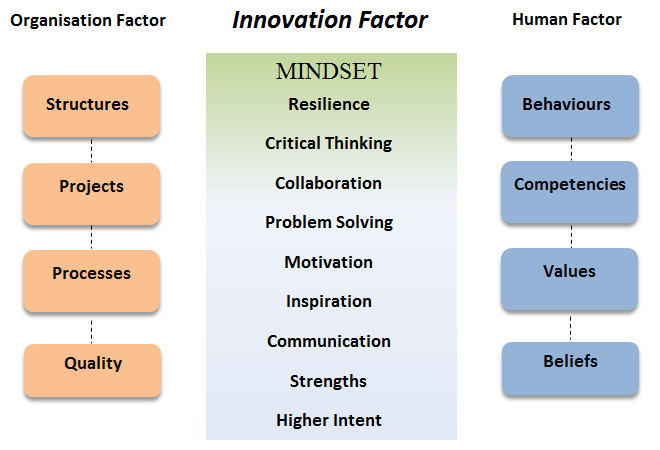How often do we come across the word ‘Innovation’ in today’s business speak? Innovation is being seen as the next progressive step for growth, after cost-reduction or business re-engineering. In the last recession, only companies that pro-actively invested in innovatively managing emergent needs of the market through new products had come out on top. Organisations now know that innovation is essential for their survival through this recession as well, but many organisations do not know how to manage innovation or where to start.
Innovation Organisation
Ask a manager how innovation is managed in their company and they will religiously recite a project management-themed approach awash with process maps and metrics. After all, in process speak, what cannot be measured is not worth knowing. But ask them how they know if the people in their organisation are innovating to their best potential and they will probably not know.
That’s the problem with innovation. Its about creativity, supported by effective leadership management. Its not about metrics and its not about organisational control. However innovation it is vital to an organisation’s survival.
Innovation People
Organisations have become comfortable with well-managed change programmes like Six-Sigma and TQM that fit into the organisational structural frameworks and are guided by established processes to provide intended outcomes. These ‘organisation factors’ are the source of wealth generation in a vibrant economy with predicted demand. (See Fig. 1). People are trained to guide and support this set process. They function as facilitators, complying with set working practices. Through these compliance practices, managers control ‘what’ is being done.

© Cognitions 2012
However, innovation is also dependant on people, on their creativity, and on their ability to create patterns out of abstract thought. The reason behind this…the greater good. Creative people have a sense of purpose. Every successful innovator knows ‘Why’ they are doing what they do. It is their values and core beliefs which drive their process of thinking. These beliefs permit ‘the framing’ of the ‘Why’ in new contexts of sense-making.
No two ideas in an innovative group will be the same. However to build any creative idea into an innovation, it needs to be supported and that means sharing ideas with the innovation team. This not only brings other perspectives to the table but tests the strength of the idea to withstand future hurdles in its downstream process of implementation. It is here that competencies and behaviours of each member of the group can decide whether an idea can be taken to the next level.
The Secret of Innovation Success is Mindset
For every innovation to be successful, one of the fundamental steps is to get the initial creative idea onto a firm footing. A lot of innovation fails to deliver a successful outcome because it has either not been thought through very well or the innovation team have not asked the right questions at this initial stage. The job of innovative groups is not just to create ideas but to examine feasibility, alignment with company objectives and convey the breadth of improvement.
Bringing teams to the ‘right mindset’ and finding ways to lead hearts and minds in support of the innovative idea would need the owner of the idea to have, amongst many things, Emotional Intelligence, Resilience and possess good Communication skills. Encouraging participation through Collaboration and collaborative tools like risk analysis techniques and creative problem-solving can provide the Motivation and Inspiration to fuel the visualization of anticipated benefits. Reflective Critical Thinking can also provide the necessary impetus for piggy-back innovation, a concept where the idea generated from one person can be the pathway for another’s idea.
Getting into the Process of the Mindset
So, whatever the innovation, there is a process to creativity which, supported by a strong and committed Mindset-Leadership, guides the translation of good ideas into a viable concept. As more and more organisations start to recognise what thought processes are necessary for high-value innovation, it becomes easier to understand how training, facilitation and coaching can provide substantial benefits to creative people; those who drive the organisation’s competitive advantage into the future.
Coming Up………………
In our next blog, we will look at the importance of MINDSET in the Innovation Factor, that mediates between the Human Factor and the Organisation Factor. The third blog in the series will reveal the dynamic process of interaction between these competing forces and the way that the ‘Human Factor’ determines the success or failure of innovation in an organisation.
Cognitions. The Power of Partnership
© Cognitions 2013



